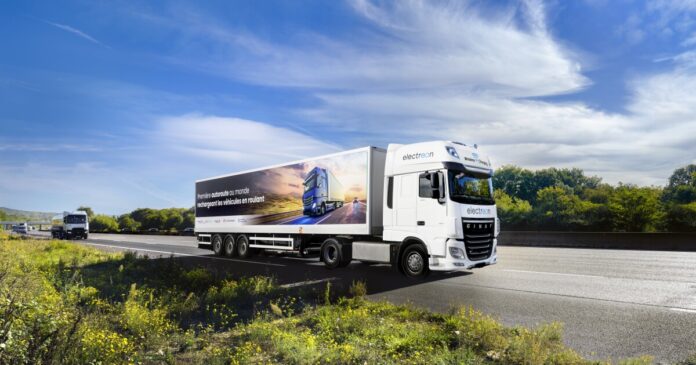Tucking in behind a heavy truck as it crawls along the highway could soon be quite an attractive option for EV drivers. Early results from a wireless charging pilot in France show that coils embedded in the road are capable of transferring “more 300 kW of instantaneous power.”
This could see electric vehicles (EV) of the near future undertaking cross-state or even cross-country journeys without needing to stop at a supercharger for a quick top-up.
It’s a particularly appealing prospect for long-hauling cargo movers looking to cut emissions (and costs), as trucks could be fitted with a smaller battery pack that’s topped up as they roll. The system could also benefit regular e-drivers, package delivery operators and public transport concerns.
VINCI Autoroutes
It’s been a while coming, but we’re inching ever closer. We saw a public roadway open in Detroit a couple of years ago, for example, and the same company that supplied the under-road induction coils was also part of another project at around the same time called Charge as you drive.
Following lab tests and closed test tracks, the “first real-world dynamic wireless charging trial” has now entered its operational deployment phase. This involved project partners Electreon Wireless, Vinci Construction, Gustave Eiffel University, and Hutchinson installing an induction charging system under the surface of a 1.5-km (~one-mile) stretch of motorway outside Paris in France.
The partnership has equipped four prototype vehicles – a heavy duty truck, a van, a car and a bus – with pickup coils and set them loose in real-world driving conditions to assess the system’s performance. Teams spread over three laboratories at Gustave Eiffel University have been tasked with performing on-site tests, and early results indicate that the system can deliver peak power to moving vehicles at more than 300 kW, or more than 200 kW “under optimal steady state conditions.”

VINCI Autoroutes
“The initial results of the ongoing trials on a section of the A10 motorway confirm the findings of previous studies,” said Vinci’s Nicolas Notebaert. “Deploying this technology on France’s main road networks, in addition to charging stations, will further accelerate the electrification of heavy-vehicle fleets – and thereby reduce greenhouse gas emissions from the freight and logistics sector, which alone accounts for more than 16% of the country’s total emissions.”
The installation on a stretch of motorway is seen as paving the way for future real-world rollouts, with Electreon’s CEO, Oren Ezer, reckoning that the encouraging results of the A10 trial could eventually lead to thousands of kilometers of roadways in France transformed into dynamic wireless charging highways and byways, followed by expansion across Europe.
Naturally details like who will foot the bill for such deployments once projects emerge from trial phases, and how much drivers and operators will pay for their wireless charging, are still to be worked out.
Sources: Electreon Wireless, Vinci Group


